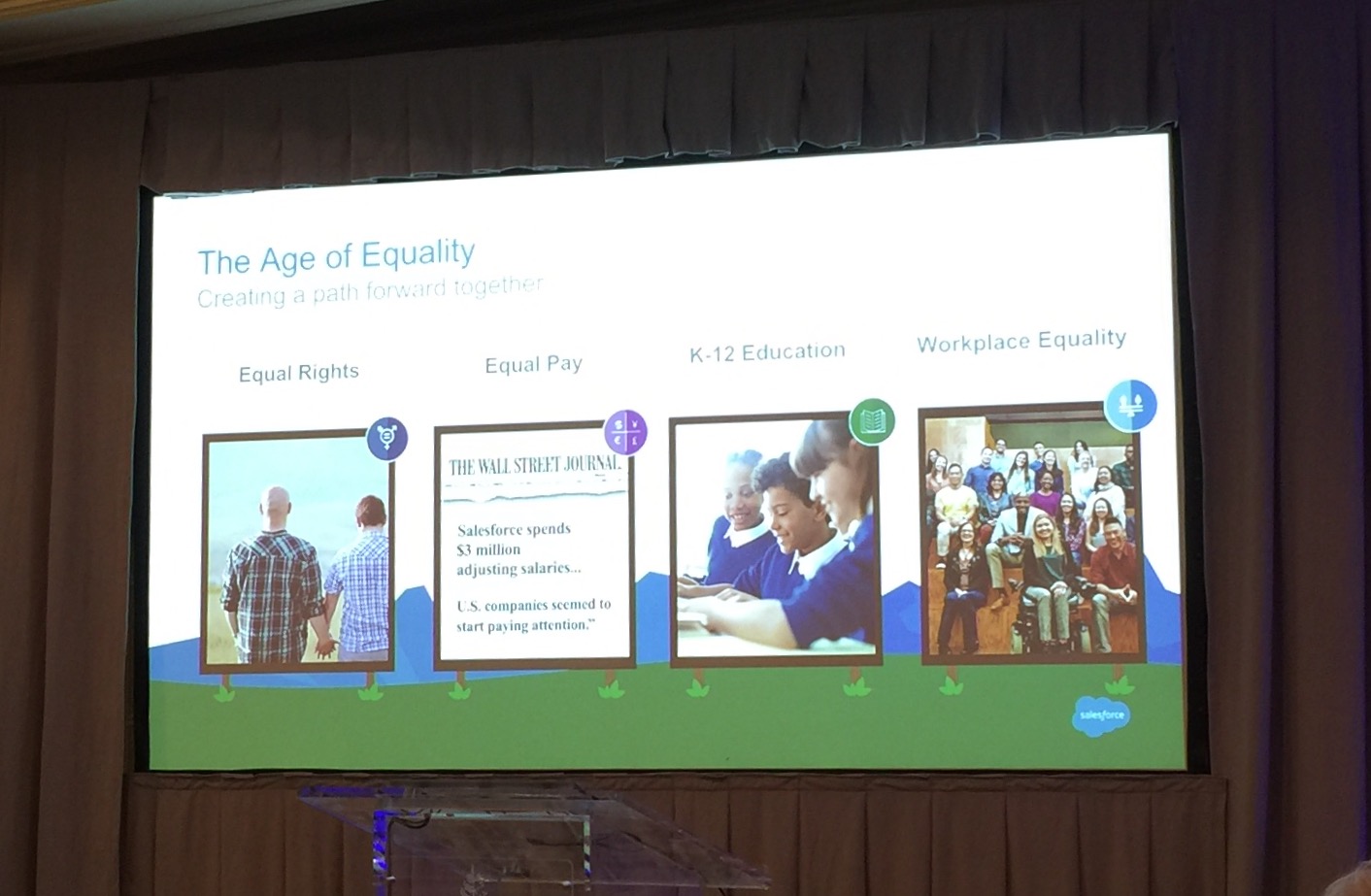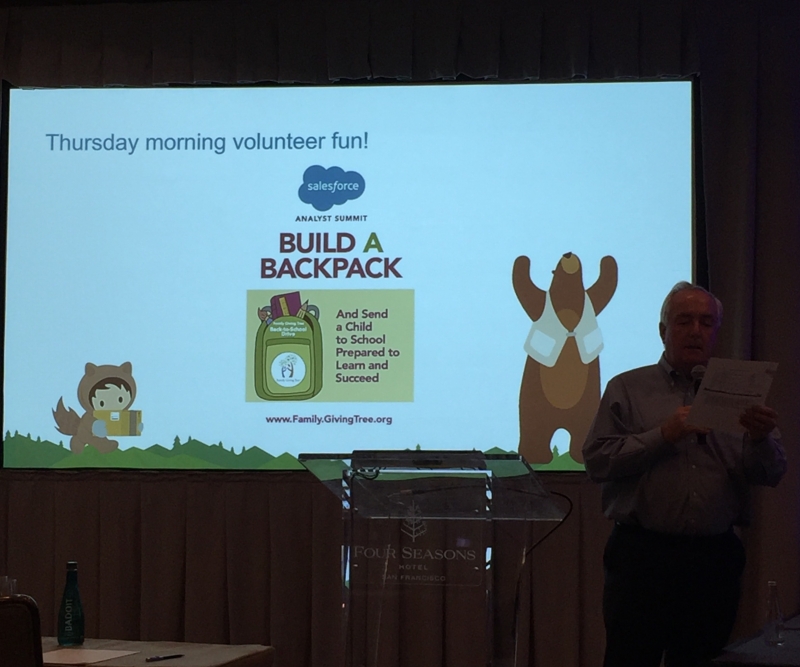I attended Salesforce's Analyst Event in San Francisco last week and beyond learning about their various cloud strategies, I had some takeaways on the broader theme of corporate culture in branding. Salesforce as a company has been known as much for their culture and philanthropic initiatives as their business success. I recently saw this quote from Salesforce CEO Marc Benioff, “The business of business is improving the state of the world.” That’s a bold statement, yet the company has successfully woven the culture of giving back into the fabric of the company beginning over a decade ago with their 1-1-1 model, which is 1% of equity, time, and product donated to charitable causes. The 1-1-1 model has been emulated by over 1,300 other companies. At the analyst event, culture took center stage with the second presentation by Salesforce’s new Chief Equality Officer Tony Prophet. A comment by Prophet that resonated with me was his explanation of the word equality versus diversity in his title and that diversity does not equate to equality (couldn’t agree more). The session with Prophet led me to think about Colin Powell's email hack last year and the subsequent leak of Salesforce's acquisition strategy deck. It provided a glimpse into the highly acquisitive company’s ($4.5b in 2016) merger & acquisition due-diligence process. Besides all the juicy tidbits on the companies listed and code names assigned, there were some great learnings for other C-Suites. Specifically, my takeaway was the prominence Salesforce placed on the target company’s Glassdoor CEO approval rating and whether employees would recommend the company to others. Companies like Salesforce stress the importance of employer brand and understand that employee satisfaction and CEO approval are indicators of a company's culture and values. It leads to the ability to attract and retain talent as well as help predict synergies during the integration process.

Beyond M&A evaluations, employee reviews are increasingly used as an evaluation criterion for supplier stability by procurement and Wall Street looks at it as part of a company’s stock analysis. CEOs need to pay close attention to these reviews and not see it as only an HR or marketing metric. Employees represent the company and can be the best brand advocates, which leads me to my point that Marketing is not only an external initiative but an internal one as well. Companies with a mission, vision, and value statements are ubiquitous. Where the disconnect happens is when values are set at the top, but not communicated effectively to the rest of the company or externally. The importance placed on culture and the effective “marketing” of philanthropy and business is where Salesforce excels.
So how can other C-Suites learn from Salesforce’s example? From the marketing perspective, I suggest that Chief Marketing Officers (CMO) partner with the Chief Human Resources Officer (CHRO) to market “culture” and to build and promote employee engagement campaigns. A few ideas for CMOs and CHROs to partner on include:
- Start with a great onboarding experience - Create a welcome video or provide a live session focused on corporate values to start the process. Provide a kit with branded gifts as a welcome to new employees and offer a session on the use of social media to improve their personal social presence and brand advocacy.
- Create Employee Journeys - Flip the concept of marketing journeys inward and place new hires and other employees through an employee “journey”. Companies such as Qstream and Worktap can provide branded portals and/or employee onboarding programs complete with gamification to keep them engaged.
- Celebrate Employee Successes - Create an internal communications newsletter or on the company intranet, celebrate and market employee milestones and successes.
- Place Equal Importance on Employee NPS - NPS (Net Promoter Score) isn’t just for customers anymore. Create an NPS survey for employees on whether they would recommend the company to a friend. This is the same as the recommend score on Glassdoor. HR can work the nuances of the survey and Marketing can assist with promoting the survey through the internal communications process.
Although this blog focused on the partnership between Marketing and HR, corporate culture has to start at the very top with the CEO. The reason the 1-1-1 movement continues to grow and that Salesforce has a Chief Equality Officer is because Marc Benioff makes culture a priority. At the time of this blog, Marc Benioff has a 97% CEO approval rating on Glassdoor and 85% of employees would recommend the company to a friend.
Back at the Analyst Event, Salesforce included a volunteer activity for the charity, Family Giving Tree, to assemble backpacks for K-12 underprivileged children in the San Francisco area. While assembling the backpack I couldn’t help but think about the child about to receive the pack I helped put together. Getting a deeper dive on Salesforce’s go-to-market plans and making a small difference? Time well spent for the first week of 2017.

For more, click here to view a Storify collection of my tweets from the #SalesforceAR event.


